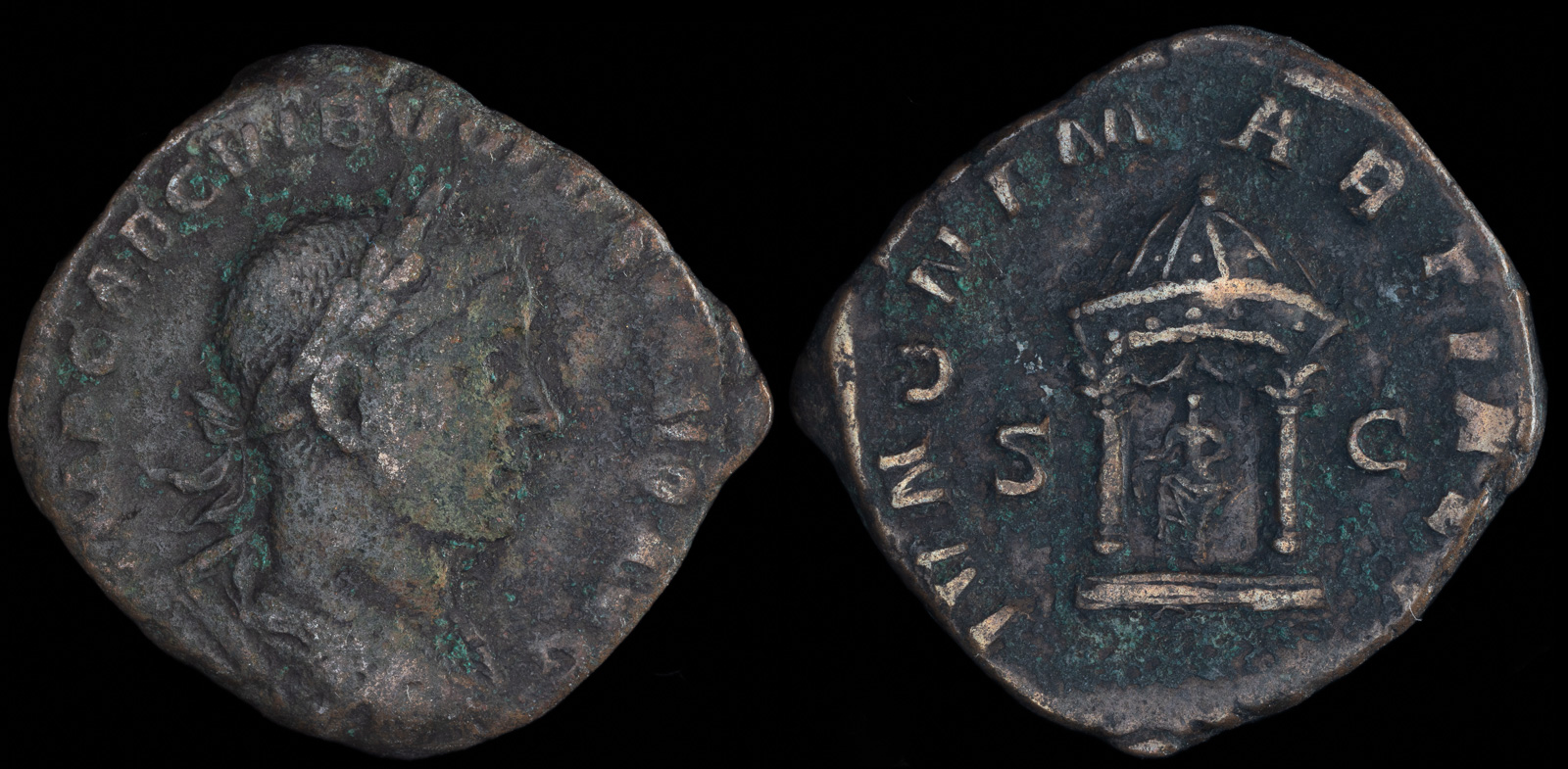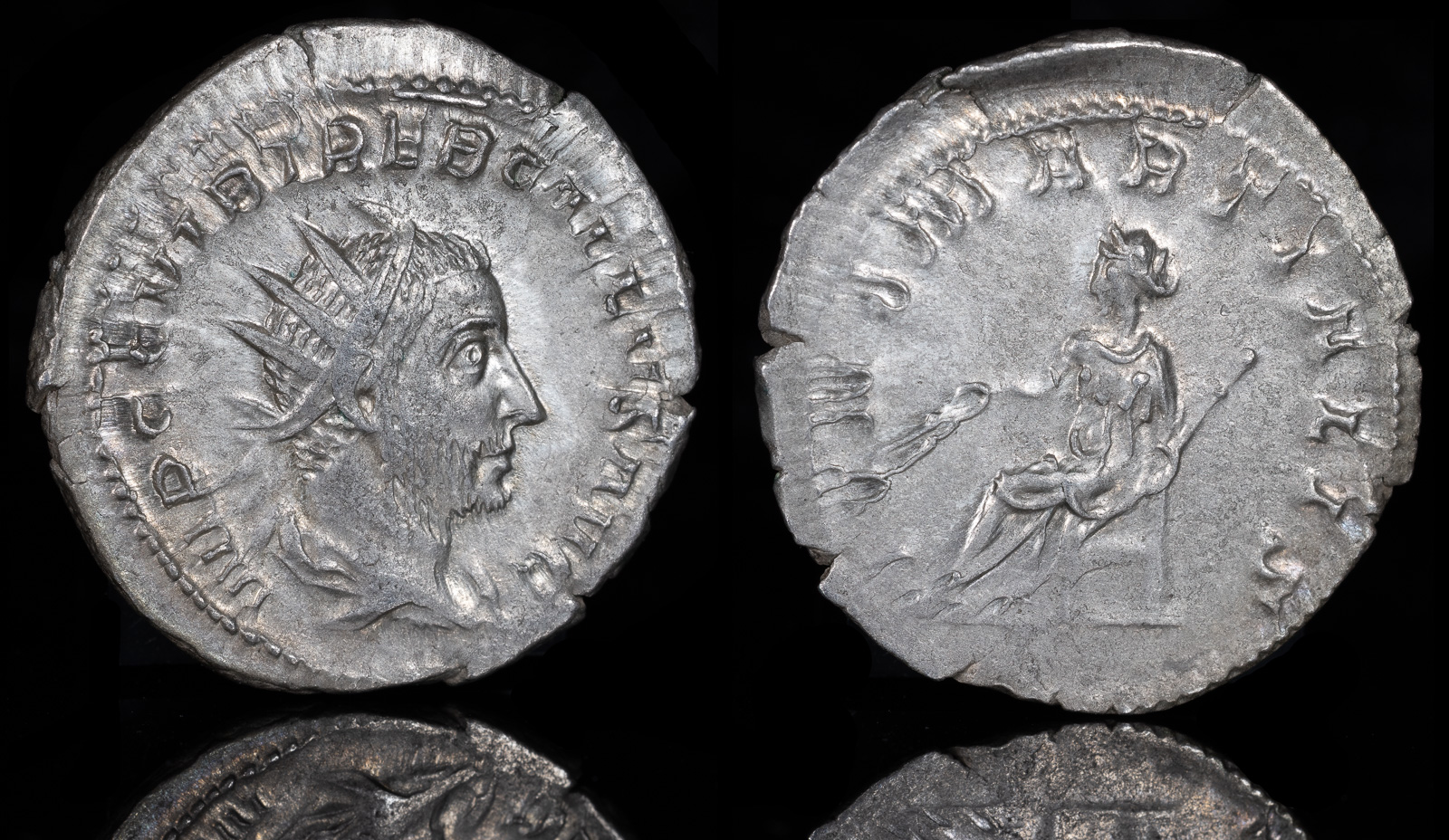
Volusian
251-253 CE
Æ Sestertius 29mm, 16.91g, 12h
Obv: Laur., dr., and cuirassed bust right
Rev: Juno seated facing, holding patera and scepter, within domed distyle temple
RIC IV 253a; Cohen 46
Times were not easy in the mid-third century, and at the time this coin was minted there was a terrible plague that caused the leaders to curry favor with the gods for an end. It is believed that was the reason for the Temple to Juno Martialis, depicted on this coin. While Juno makes sense as a god capable of saving the public, the word “Martialis”, which is inscribed on the coin, is less certain.
The term was used only during the coinage ofTrebonianus Gallus and Volusian but curiously the depiction of Juno is not warlike at all, which the term implies. Some speculations have been that she was the mother of Mars, or that her festival took place on March 7th. It may also refer to her temple in the Campus Martius.
It was only after I added this coin, which shows the statue of Juno within her temple, that I noticed I already had a coin of Juno Martialis in myTrebonianus Gallus example.

Trebonianus Gallus
AR Antoninianus 3.16g, 23mm, 12h
Rome, 251-253 CE
IMP C C VIB TREB GALLVS AVG, radiate, draped and cuirassed bust to right / IVNO MARTIALIS, Juno seated to left, holding corn-ears and sceptre
RIC IV 69; RSC 46
Ex Roma
Although the designs are very different, they don’t appear to conflict. She appears seated in both, but the antoninianus depicts just the statue, while theVolusiancoin also shows the temple. Personally, I prefer the design with the temple.
Outside of these coins, there is currently no evidence the temple actually existed. My feeling is that it did, since so many coins depict it and our recorded history from this time period is thin.